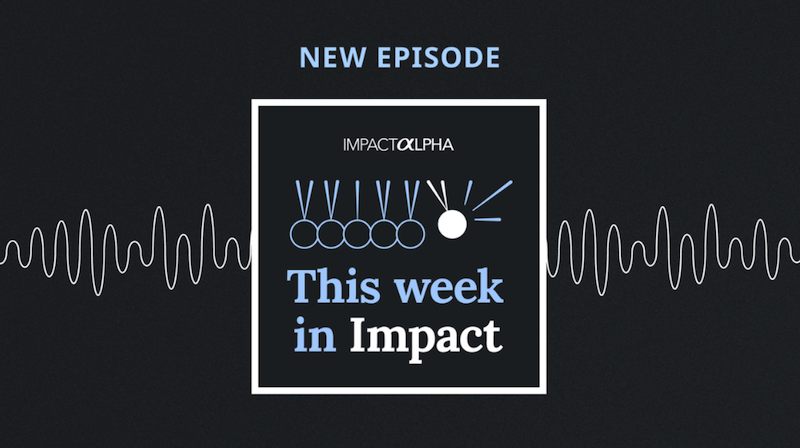Impact is increasingly seen as not only crucial to a just recovery from effects of COVID-19, but also to the creation of stronger, fairer economies and the achievement of long-term social and environmental goals.
But are we achieving those goals? Consider an analogy: Many of us want to exercise every day – that’s a good intention. But do our actions make us fitter and healthier? That would be a measure of results.
Impact investing is also moving to measure results, in addition to intentions. From its roots working at small scale to facilitate and intentionally deploy funds into social mission organizations, the movement has more recently attracted some of the biggest names in institutional capital and development finance to target investment on a much larger scale.
Let’s call those social-enterprise roots Impact 1.0, and the arrival of institutional capital Impact 2.0. Impact 3.0 brings measures of impact across all investments and corporate decisions, regardless of their intention.
In our movement, impact has meant the intention to generate positive social and environmental impact alongside financial returns. The latest addition in our development sees impact as a measurement tool rather than an intention. The result could be impact considerations across every investment decision and every company decision. This is Impact 3.0 and it’s coming over the horizon.
Impact as a metric is already gaining traction within ESG frameworks. There is a tidal wave of ESG activity globally, with many ESG funds incorporating impact measurement and management, a major advance and a step towards what we could define as “ESG+”. Nevertheless, there is still a sharp distinction between the two categories – ESG intends to reduce risk, impact investing intends to achieve positive impact.
There are other projects doing important work on better impact measurement and harmonized global standards. The Impact Weighted Accounts Initiative, for instance, is showing how impact accounting metrics can work across companies and investments, measuring the outputs they produce. These developments enable investors and companies to make better decisions, and permit savers and pension contributors to invest in line with their values, which can ultimately benefit people and the planet.
The future of impact
We will be discussing what we want the impact investing sector to look like in the next 10 years at the GSG Global Impact Summit 2021, Oct. 6-8 (see in particular Workshop Series 6; Forum 6.1).
The exponential development of impact can be overwhelming for participants in the space. Which field offers the best opportunities? Is it investing with strong intention and high integrity into tough and important social and environmental issues to achieve long-term goals? Is it much larger scale investment targeting the massive societal or climate challenges we face, even if that means losing some of the impact specificity and even some of the integrity?
Or perhaps we should focus less on what we intended to achieve, and instead use transparent impact metrics across every investment and company decision, with the belief that transparency and impact measurement will drive positive change at a scale we have never seen before.
At the GSG, we believe that we should embrace all these fields of work. Each country, and each social or environmental priority, will present its own challenges and opportunities. It’s a matter of where you are now, and where you can get to next. We also understand that investors have their own goals and constraints, but can move towards impact either via intentional investing or by using standardized impact metrics and transparently reporting their results.
Our goals at the GSG are to benefit people and planet, to achieve the SDGs and reach net zero greenhouse gas emissions, using all the impact tools we have at our disposal. Impact investing will remain at the GSG’s core. It is ever more important that we give a crystal-clear definition and narrative for impact investing, showing where it sits in the spectrum of capital, encouraging more funds into impact investing and demonstrating its value through results, both financial and societal.
But we also need to do more on ESG, including how it can contribute to better outcomes and how we can encourage the shift from ESG towards impact. Similarly, we need to highlight how and where social and environmental impact meet – for instance, the climate crisis is hitting vulnerable populations particularly hard, and social justice is crucial to get support for climate mitigation efforts.
We should not lose sight of where we are or what our goals are. Every country and every challenge should find the most relevant response and appropriate tools for their situation. Impact as a measurement tool across all investments is an exciting new step for the impact movement.
Cliff Prior is CEO of the Global Steering Group for Impact Investment.












